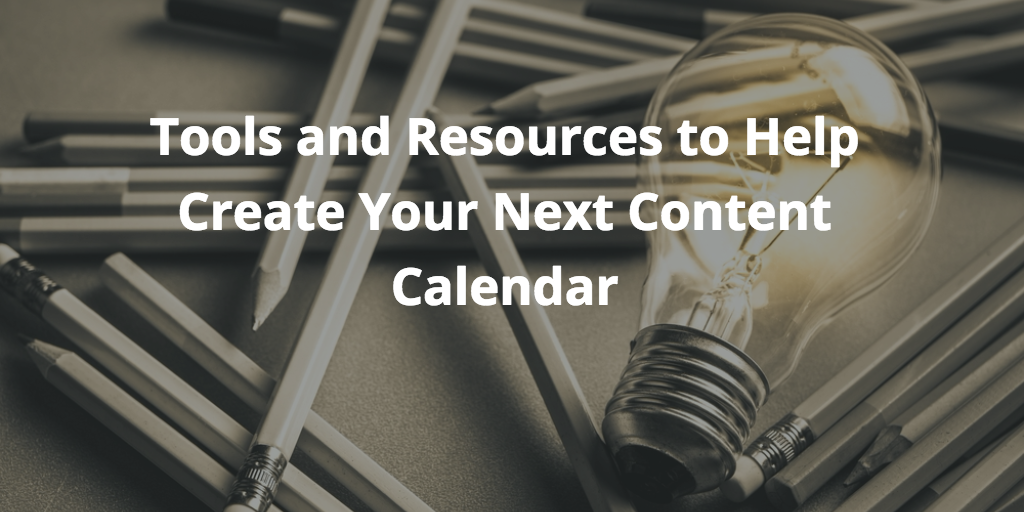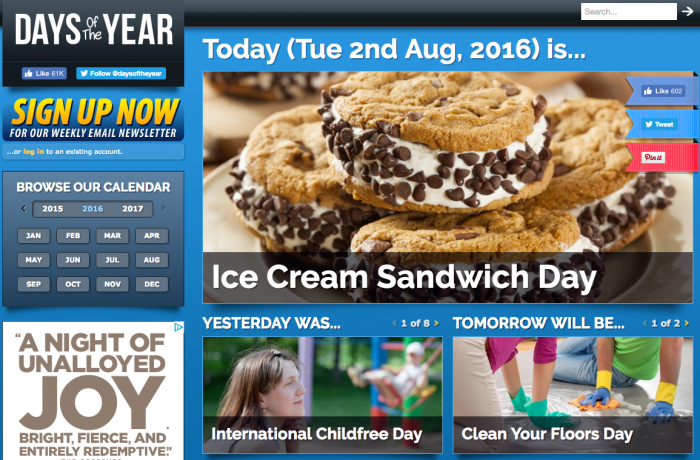Tools and Resources to Help Create Your Next Content Calendar

Having a content calendar can be a big help when it comes to leveraging content to drive more traffic and leads to your website. Putting one together can take time and while it’s worth the effort, there are ways to make the process less painful and more efficient.
In this post, we’ll discuss some tools and resources that can help you put together a content calendar, as well as populating it with content that helps you connect with your audience in the right place, at the right time.
What and why?
If you’re already a bit of a content calendar connoisseur then you can skip this bit but for all of you who have yet to create one, you might like to know a bit about why you should have one in the first place.
Most of us know what content is and why it’s important to help build a brand and drive traffic to a website. In fact, we’re probably all generating content on a daily basis, whether it’s writing for our company blog, posting a job ad on LinkedIn or sharing our status on Facebook. And if your business relies heavily on a web presence (and let’s face it what business doesn’t these days?), then generating large amounts of content is essential.
But with large amounts of content comes numerous authors, ad-hoc themes and stressful deadlines that all run alongside the time needed to react to news and keep your content on trend. Having a content calendar helps you plan and prepare with clear objectives, topics and resource in mind.
Let’s start at the very beginning
When thinking about what to include in your content calendar, there are four categories you need to consider:
- Holidays and observance dates
- Important company dates
- Relevant dates for your industry
- Relevant dates for your customers
By planning content around these, your authors will have time to prepare content well ahead of time and hopefully stop those last minute content dashes. To save time, you can download a free content calendar template to help you get started. This will give you the basic structure and contains key holidays, national and noteworthy dates and well-known industry events.
You can then add in additional content relevant to your business and customers. Your calendar will help you to keep up-to-date with everything that’s going on, and will drive traffic to your site as people use you as the go-to for all industry information.
We’re all going on a summer holiday
Your first step is to block out major international and national holidays, including important religious dates. You can probably remember most of the big ones, but there are a number of sites such as www.timeanddate.com that have in-depth lists – just go through these and pick out the ones relevant for your business. You should also include non-holidays, such as valentines day, bonfire night etc. that might lend themselves to timely, creative content.
It’s a date!
Next step is to populate your calendar with dates and events that are of interest to your customers and that will spark interest to anyone visiting your website or social media channels. To help you find those unusual ‘national days’ you can find a full list on www.daysoftheyear.com. The UN also has an excellent website for more serious observances such as World Day of Social Justice.
Once you’ve got those dates in place, move on to thinking about specific dates and events, relevant to your demographic. Your customers are more likely to share things that are relevant to their lives so by acknowledging these, you’re creating content that your customers will want to see and engage with.
The list is endless, but consider some of these below when thinking about your audience’s lives and what interests them:
- Awards ceremonies
- Film releases
- Sporting events
- Celebrity marriages or births (for example, the Queen’s 90th birthday)
- Festivals and concerts
If you’re unsure what content is going to be read and shared by your audience then why not ask them? You could send out a simple survey or sit down with a few of them.
You also want to share important dates and events that are relevant to your business. This is an opportunity to focus on your company, your product, your strategy. Take a look at your business strategy for the year and use that to help you plan your content.
- Do you have a new product launching?
- Is there any collaboration planned?
- Do you have a new store or office opening?
- Any significant new recruits?
Some of it might not be appropriate to share and you may not use everything, but it’s important to include it as it will help everyone know what’s going on and help you to plan resource, especially during those busy periods.
Get creative
Once you’ve got your calendar in place, you need to start actually creating the content. Make sure you’ve assigned the right jobs to the right people. If you’re trying to force people to write who don’t enjoy it, you’ll have a constant battle trying to pin down their work. Sometimes the best route is to extract the information from the best source, then pass it to a writer to work their magic on.
Here’s to a well-planned year ahead!
You might also want to read “4 Ways to Become a More Organized Blogger“.
This post was written by Caroline, a Senior Account Manager at Stratton Craig, based in London and Bristol. She works with a range of clients to combine project management with digital marketing and copywriting activity. In her spare time, she loves a game of lacrosse and hanging out with her friends and family.



